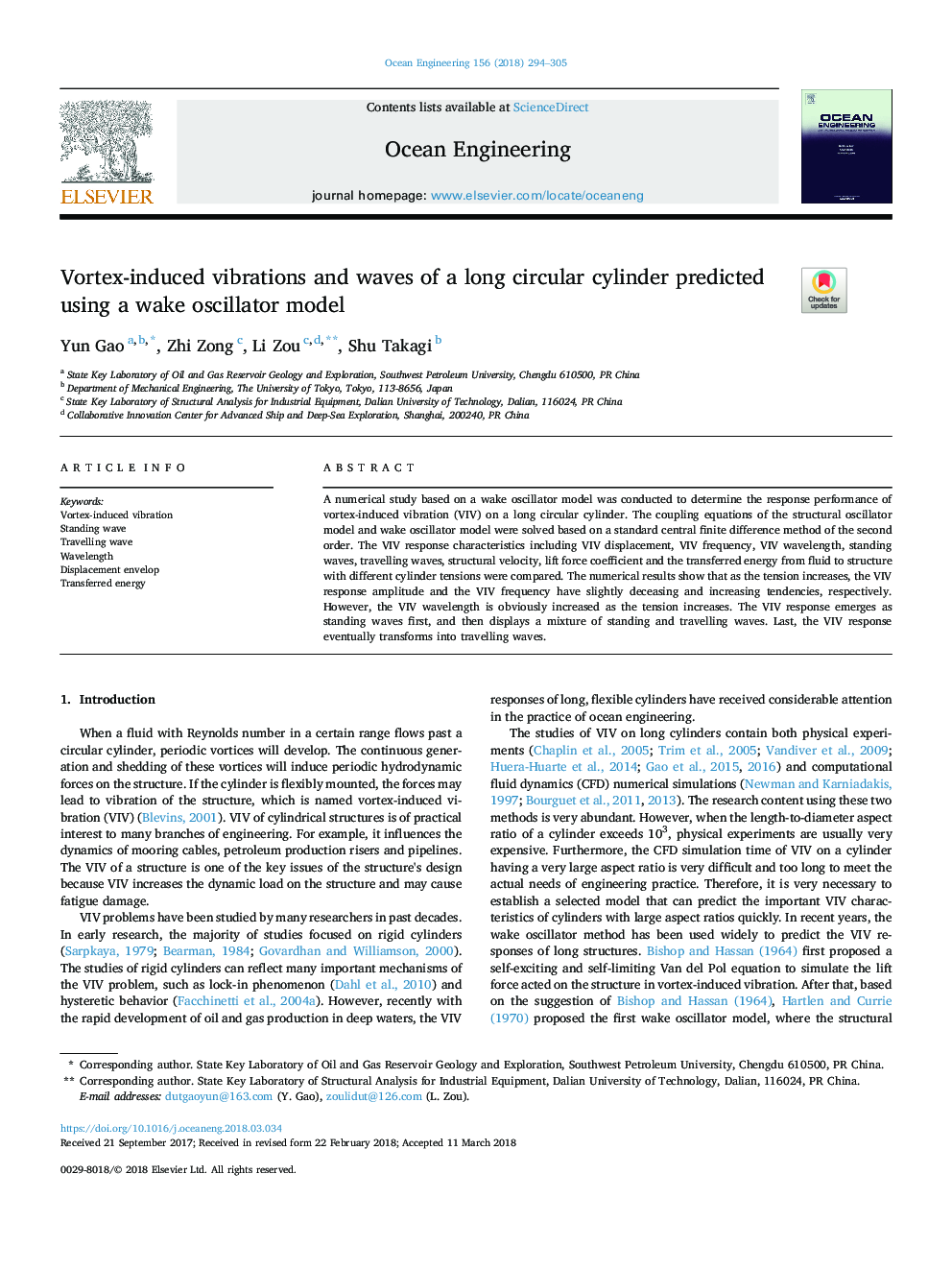| Article ID | Journal | Published Year | Pages | File Type |
|---|---|---|---|---|
| 8062672 | Ocean Engineering | 2018 | 12 Pages |
Abstract
A numerical study based on a wake oscillator model was conducted to determine the response performance of vortex-induced vibration (VIV) on a long circular cylinder. The coupling equations of the structural oscillator model and wake oscillator model were solved based on a standard central finite difference method of the second order. The VIV response characteristics including VIV displacement, VIV frequency, VIV wavelength, standing waves, travelling waves, structural velocity, lift force coefficient and the transferred energy from fluid to structure with different cylinder tensions were compared. The numerical results show that as the tension increases, the VIV response amplitude and the VIV frequency have slightly deceasing and increasing tendencies, respectively. However, the VIV wavelength is obviously increased as the tension increases. The VIV response emerges as standing waves first, and then displays a mixture of standing and travelling waves. Last, the VIV response eventually transforms into travelling waves.
Related Topics
Physical Sciences and Engineering
Engineering
Ocean Engineering
Authors
Yun Gao, Zhi Zong, Li Zou, Shu Takagi,
